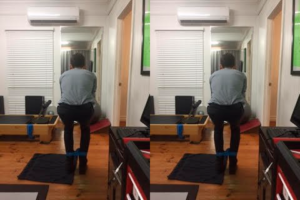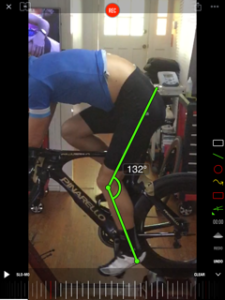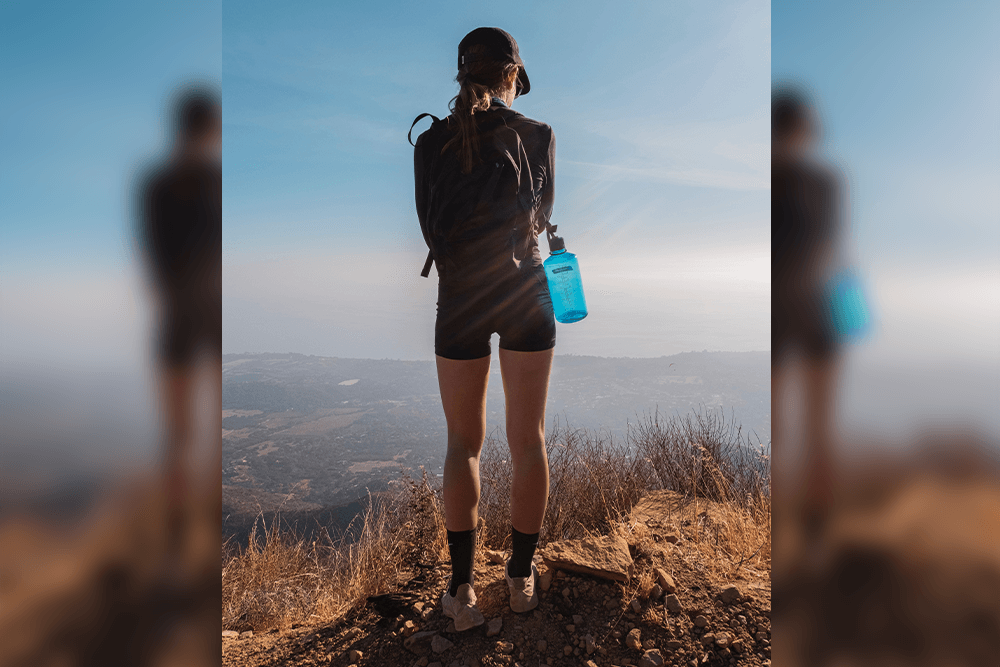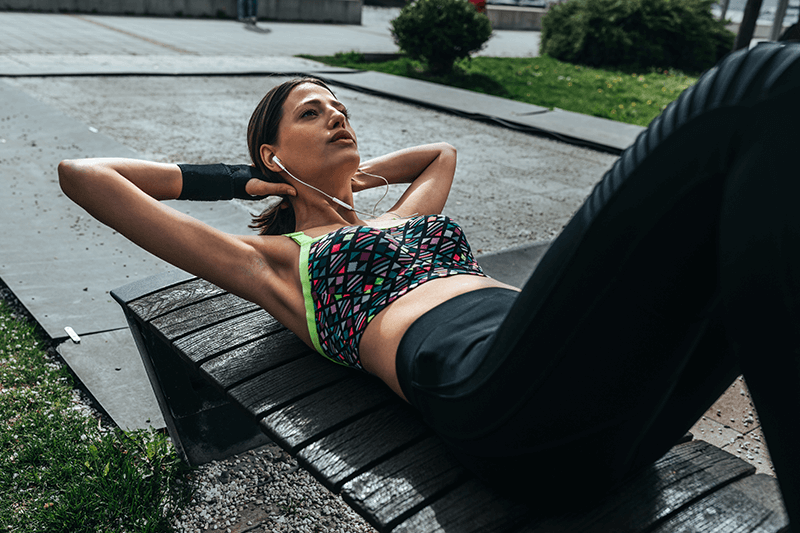
PHYSIO BIKE FIT SERIES (PART 1)
LOWER BACK PAIN WITH CYCLING: THE MOST COMMON CAUSE OF PAIN ON THE BIKE
This article is part 1 of 6
Lower back pain is the most common injury in cycling (Clarsen, 2010). Disc injuries can arise over time, but like all low back pain, the majority of which is non-specific. There are 2 key biomechanical risk factors. These are:
- Prolonged and excessive forward bending of the lower back with backward rotation of the pelvis (refer to figure 1) (Van Hoof et al, 2012)
- Increased side-to-side movement with ‘rocking’ of the pelvis while pedalling (refer to figure 2)

Figure 1: excessive forward bending and pelvis backward rotation.

Figure 2 depicts an increased hip drop on the left side which results in the lower back side bending to the right/ opposite side.
These are the 3 key strategies to ease your lower back pain while cycling:
- Technique:
Technique modifications and cues are essential. Firstly, finding a more upright position, i.e. moving from your drops to the hoods or tops, or spending less time in a ‘time-trial’ position on the aero bars can all help reduce load through the lower back (Silberman, 2005). Of course it is advantageous to get low and ‘aero’; however, this must occur gradually with proper conditioning and not at the expense of an aching lower back!
Another simple modification is to increase your cadence (pedalling turn-over). A slow cadence where you are grinding a big gear can induce suboptimal movement patterns when muscles fatigue. This means you can start excessively bracing with large muscles that put greater forces through the back as well as leading to excessive lower back movement. Try increasing your cadence to 90-100rpm.
Lastly, start getting your glutes to do the work. The large muscles of your bottom are designed to take the load, not the smaller muscles and segments of your spine. Gently draw your pelvis forward while thinking of widening your sitting bones (which you can’t do!). This helps activate your deep glutes which will help stabilise the pelvis and the lower back.
- Strength:
To help prevent lower back pain riding, there are a couple of gaps in strength that often require targeting with exercises off the bike. Firstly, working on isolated activation of the deep core muscles. Your body’s natural ‘back-brace’ transversus abdominus, works to support each level of the lower back, while your pelvic floor forms the bottom of a ‘barrel’ of strength (Silberman et al, 2005).
Additionally, improving the strength of your glutes in cycling positions is also key to preventing lower back pain while cycling. Half squat glute slides are key for activating the glutes on the outside of your hips (refer to figure 3). These stabilise the pelvis and lower back to minimise side-to-side ‘rocking’. While a well-executed squat where you sit back into your glutes, keeping your normal lower back ‘natural curve’, is ideal for strengthening glute max at the back of your pelvis (refer to figure 4)

Figure 3: Squat down half way, like sitting on your bike and maintain this position as you slide outwards. Pay close attention to keep your body evenly between each foot and make sure your knees always line up with your feet.

Figure 4: sitting down on a chair, feel how you use your bottom muscles (glutes) and the ‘meaty’ part of your thighs (quads). Keep the natural, (concave) curve of your lower back and your pelvis tilted slightly forward. Aim to keep your shins (close-to) vertical.
- Bike set-up:
As with any cycling-related discomfort or injury, the way the bike is set up for your biomechanics is also critical. Firstly, finding your ideal saddle height based on your bony leg length (trochanteric height) and your cleat stack height is a must. A saddle that is too low will round the pelvis backward resulting in excessive forward bending of the lower back (refer to figure 5).

Figure 5
When the saddle is too high, it promotes the side-to-side ‘rocking’ of the pelvis and resulting side bending of the lower back in the opposite direction, (refer to figure 2 above). Side bending happens automatically with rotation in the lumbar spine. This can damage your lower back discs over time.
Aside from seat height, if the bars at the front of the bike are too much lower than the saddle this causes increased bend through the lumbar spine, especially if the back of your glutes (bottom) and hamstrings are already tight (figure 6) (Deakon, 2012). It is essential to get that right.

Figure 6
Physio Kieran is also a professional triathlete, most recently winning Mooloolaba Tri this year. He is passionate about getting Bike Fits right for performance as well as injury prevention. To chat through your issues as well as specific goals, message him at [email protected] to discuss a plan that is right for you.
To book an appointment call us at 07 3847 8040
For more information check us out at blphysio.com.au









